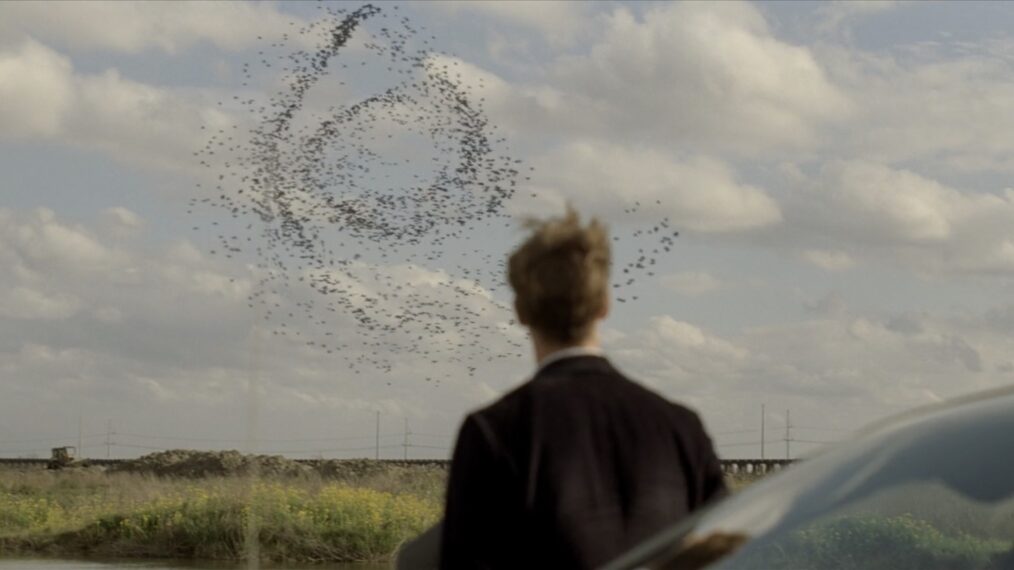“I have no illusions,” Oscar winning-director Damien Chazelle said on a podcast in March. “I won’t get a budget of Babylon size any time soon, or at least not on this next one.”
Chazelle was reflective about his 2022 Paramount Pictures epic that starred Margot Robbie and Brad Pitt, received mixed reviews and grossed $63 million globally against a reported budget of $80 million. “Certainly, in financial terms, Babylon didn’t work at all,” Chazelle said. “Maybe I won’t be able to get [the next] one made. I have no idea. We’ll have to wait and see.”
That ambivalent sentiment isn’t an outlier. Directors — from Oscar winners like Chazelle to up-and-comers — are in a precarious position when it comes to major studio projects. Not that this is new. Stripped of nuance, the definition of movie jail has always been: Lose the studio a lot of money and you don’t get to do another studio feature for a while, if ever.
But because of current market conditions, there is increasingly little margin for error for directors. More than a dozen industry insiders, speaking with The Hollywood Reporter, say studio filmmakers are now dealing with a particularly inhospitable environment, even when compared with a couple of years ago.
Fewer films are being made, from big-budget movies ($120 million-plus tentpoles) to even fewer midbudget offerings ($45 million to $60 million plus), which traditionally gave filmmakers more opportunities for financial success. Those features that are being greenlit, especially IP-driven ones, are being micromanaged by exceedingly risk-averse studio executives who are still trying to navigate how to release a film post-pandemic while making hiring decisions amid belt tightening and staggered layoffs that have netted shifting management teams.
“[Everyone] went on strike and came back to a different industry,” says a studio head, speaking anonymously. “Everything lost momentum, everything is being scrutinized and everyone has a new boss.”
Warner Bros. Discovery’s top brass has been in place for fewer than two years, and in some areas of the studio, it’s even less time than that. Then there is the industry-wide pressure to deliver windfalls that move the needle at the box office and fuel ancillary revenue streams that will appease shareholders (think: Warners’ Barbie). Film slates — now a massive line item — sit within the larger narrative of publicly traded companies.
Insiders say that nonwriting directors are having a particularly difficult time. Because of the limited number of studio films, open directing assignments that would normally be within the grasp of younger filmmakers are going to higher-level talent. Elsewhere, up-and-coming directors, those who have a festival movie or two under their belts and are looking for the next step up, are getting boxed out. Long gone are the days of Colin Trevorrow making the jump from Sundance darling (Safety Not Guaranteed) to Jurassic World.
Now, new talent must deliver multiple successful projects in a row, sans slip-ups, before being afforded the grace (albeit only so much) to fail at the studio level. Says a top manager with a stable of studio directors of the gauntlet for filmmakers, “You basically get one shot [at proving yourself], three times in a row.”
For their part, executives offer that there is a dwindling number of working directors, even those with a bomb or two, that can be trusted with bigger budgets to deliver on time, on budget and on brand. Stuntperson turned director David Leitch is at the top of studio wish lists as someone who is able to direct entertaining films while having a great relationship with talent.
For the past decade, as the midbudget studio movie — commonly a proving ground for up-and-coming helmers — went away, streaming has offered a safe harbor for directors. “Streaming was a good and bad thing for directors. It seemed like it was almost impossible to go into director jail from a streaming movie because you could only ‘lose’ a set amount of money,” says a producer behind studio releases, referencing often major marketing spends for theatrical titles. But there is a big downside to that route: Directors whose films have “done well” on platforms — i.e., made a run on a Nielsen or Netflix streaming chart — have realized the titles don’t offer a real career boost, compared with a traditional theatrical run. Bluntly assesses one rep, “No one cares if your movie did well on streaming.”
Without box office figures to tout in a pitch meeting, another supposedly quantitative measurement has been wielded to boost or demote directors: Rotten Tomatoes. The industry has a love-hate (mostly hate) relationship with the review aggregator whose measurements have long been called into question and are susceptible to distortion. “Critical acclaim is now gamified,” says one director rep. “The Rotten Tomatoes score is the first thing people look at when I go pitch a director. It inevitably affects decision-making around hiring a director.” Offers an exec: “When you hire a director, all you have is their past work and a meeting.”
Directors unable to find work in the studio system can seek refuge in prestige TV. Post Birds of Prey — a 2020 film that faced reshoots and box office underperformance — director Cathy Yan landed episodes of the HBO series Succession, netting her an Emmy nomination. Still, episodic work will only get you so far. Offers one producer of studio films, “When you get handed the keys to a Ferrari and you drive it a few blocks without crashing, no one cheers for you.” And directors can write themselves out of presumed jail, packaging independent directorial efforts. (Of course, producer-financiers who could back indie efforts are facing financial headwinds in 2024. See: Bron’s collapse.) Last year, it was announced Yan will direct the indie sci-fi love story The Freshening, a movie that she also wrote.
Disgruntled filmmakers and reps point to such directors as Robert Zemeckis, who had a massive run of films in the ’90s and into the aughts but has yet to deliver a financial hit in the past decade — but nonetheless gets a studio greenlight. Welcome to Marwen, his most recent theatrical release, grossed $13 million on a $39 million budget. “Well, if you can deliver Tom Hanks,” says one executive, in Zemeckis’ defense. (His next movie, Here, is due out in November via Sony and stars Hanks.)
Insiders also lament a lack of turnover at the highest echelons of the studio system. Michael De Luca, at 29, was running New Line and breaking young and exciting filmmakers like Paul Thomas Anderson. He then headed MGM and, now, leads Warners, working with those same filmmakers.
Everyone who spoke to THR for this story, from filmmakers to reps and executives, note that the perilous state of the studio feature and potential filmmaker fallout is likely to disproportionately affect female directors and and filmmakers of color, as movie jail often has. In 2023, of the 116 directors evaluated in 2023, 12.1 percent were women, according to the USC’s Annenberg Inclusion Initiative which noted that this number has remained flat for the past several years. So far in 2024, of top 25 grossing films released so far this year, three were were directed or co-directed by women.
“You used to be able to go on a run as a working a filmmaker where, if you didn’t shit the bed, you could work for 20 years,” says a rep whose clients have several theatrical releases this year. This person adds, in 2024, filmmaker clients may find themselves out of work — not necessarily sent to movie jail, but because of decidedly uncreative market forces, “they just got squeezed out.”
As for Chazelle, during CinemaCon in April, Paramount’s Brian Robbins announced from the Caesars Palace stage that he would be writing and directing his next movie for the Babylon studio. The reported setting for Chazelle’s new movie? A prison.
How to Succeed as a Director (by Really, Really Trying)
Is it the worst time ever to be tasked with shepherding a studio’s big-budget movie, or are things actually looking up for you right now? Consult the board, Chutes and Ladders-style, to scale up your game…

Adobe (3); Cindy Ord/Getty Images; Courtesy of HBO; Courtesy of ©A.M.P.A.S
A version of this story first appeared in the April 24 issue of The Hollywood Reporter magazine. Click here to subscribe.























































